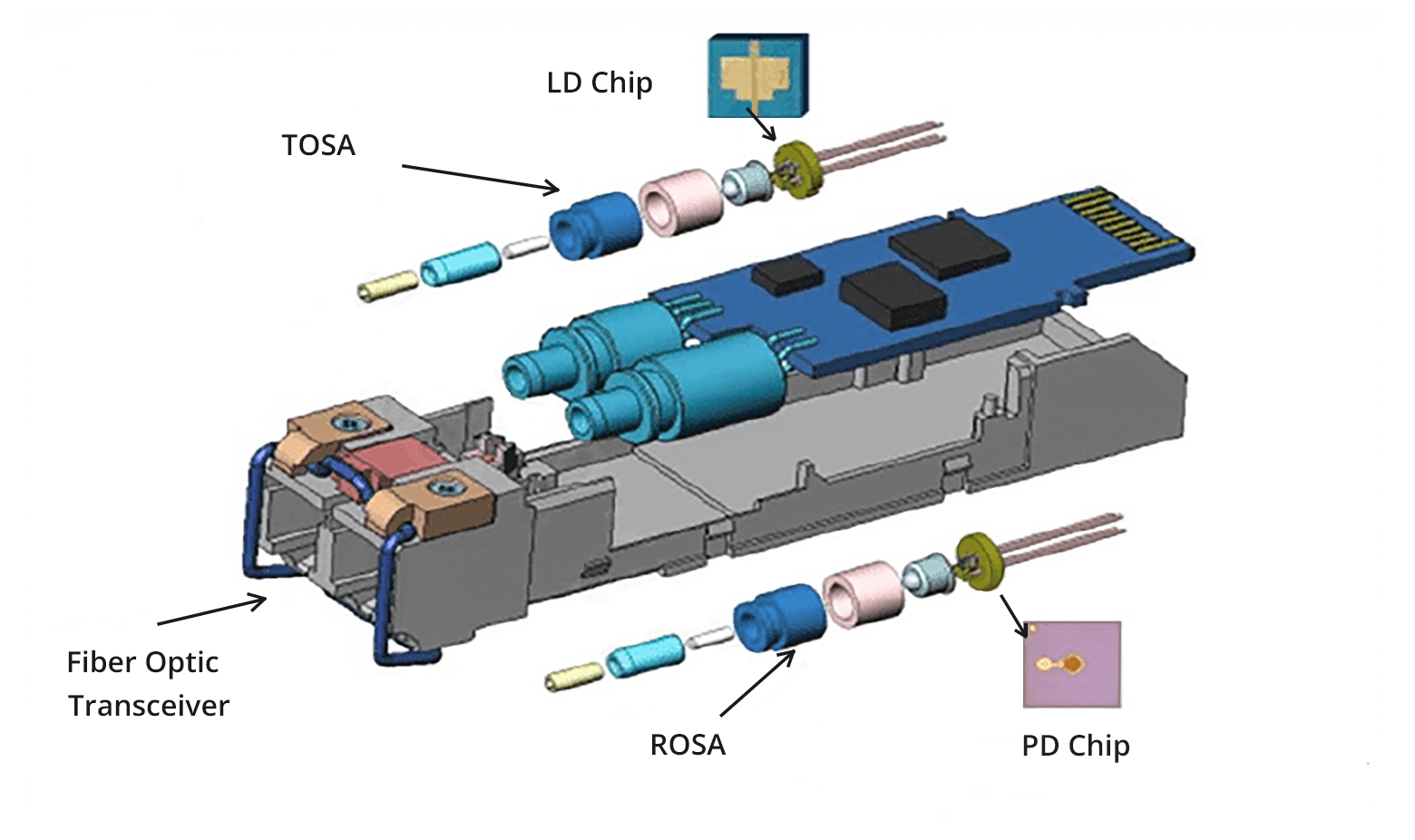Welcome!
2022-07-10 15:11 Source: OFweek Optical Communication Network Article

The report states that by the end of the 2020s, a shortage of transceivers rather than GPU supply will be the main limiting factor for the deployment of 800Gbps and 1.6Tbps high-speed data center networks.
This report "Optical Networking: Capturing the Next Wave of Value" predicts that by 2027, the production capacity of 800Gbps optical transceivers will be 40% to 60% lower than market demand; By 2029, the supply gap of 1.6Tbps transceivers may also reach 30% to 40%.
1.Root cause of shortage: Super large-scale AI computing drives a surge in laser demand
At the same time, the front-end urban optical network market is rapidly upgrading, with an increasing number of deployments of coherent zero dispersion shift (ZR/Zr+) transceivers using high data rates. Currently, about half of the metropolitan area networks have used 400Gbps ZR/Zr+transceivers.
Due to the higher requirements for low latency interconnection in AI training and inference, more and more large-scale manufacturers and data center operators are deploying high-speed coherent transceivers and investing in the construction of high-speed fiber optic backbone networks to connect distributed data center clusters.
McKinsey predicts that this will drive rapid market transformation: by 2029, ZR/Zr+transceivers with 800Gbps and above will occupy approximately 70% of the market share.
2. Industrial Chain Restructuring: Vertical Integration of Laser and Geopolitics Driving Market Changes
Faced with the situation of insufficient supply of lasers, more and more original equipment manufacturers (OEMs) are entering the upstream sector, controlling the supply of core components through acquisitions or cooperation with laser wafer fabs. At the same time, Chinese suppliers have also rapidly emerged in the backend pluggable optical module market, with their global market share growing by about 20 percentage points between 2017 and 2023, reaching about 60%.
In response to geopolitical risks and tariff pressures, the production and assembly of optical modules are also undergoing geographical relocation, with Southeast Asia and parts of Europe becoming new assembly centers.
The development of network optics technology requires extensive ecosystem cooperation between OEMs, component suppliers, and industry standardization organizations.
3.McKinsey calls for industry collaboration to prevent bottlenecks from hindering AI development
McKinsey called for "rapid collaboration" among all parties in the network optics industry in its report, stating that plug-in modules will continue to meet the needs driven by artificial intelligence, as they provide competitive performance and total cost of ownership advantages. However, with the increasing demand for energy efficiency and performance, emerging technologies such as co packaged optics (CPO) are accelerating their development to disrupt the market.
Some predictions suggest that CPO can reduce data center energy consumption by up to 30%, while supporting bandwidth of 3.2 Tbps and above, supporting a wide range of new generation optical products in the next decade.
In addition, due to the potential for integrated optical and electronic devices to generate temperatures that traditional cooling methods find difficult to dissipate, CPOs face manufacturing barriers - particularly in packaging and assembly - that must be overcome to ensure reliability, stable performance under fluctuating thermal conditions, stable connectivity, and compatibility of integrated components within the system.
Developing industry standards for system level integration of CPO is crucial for improving the yield of CPO devices and accelerating the adoption of CPO.